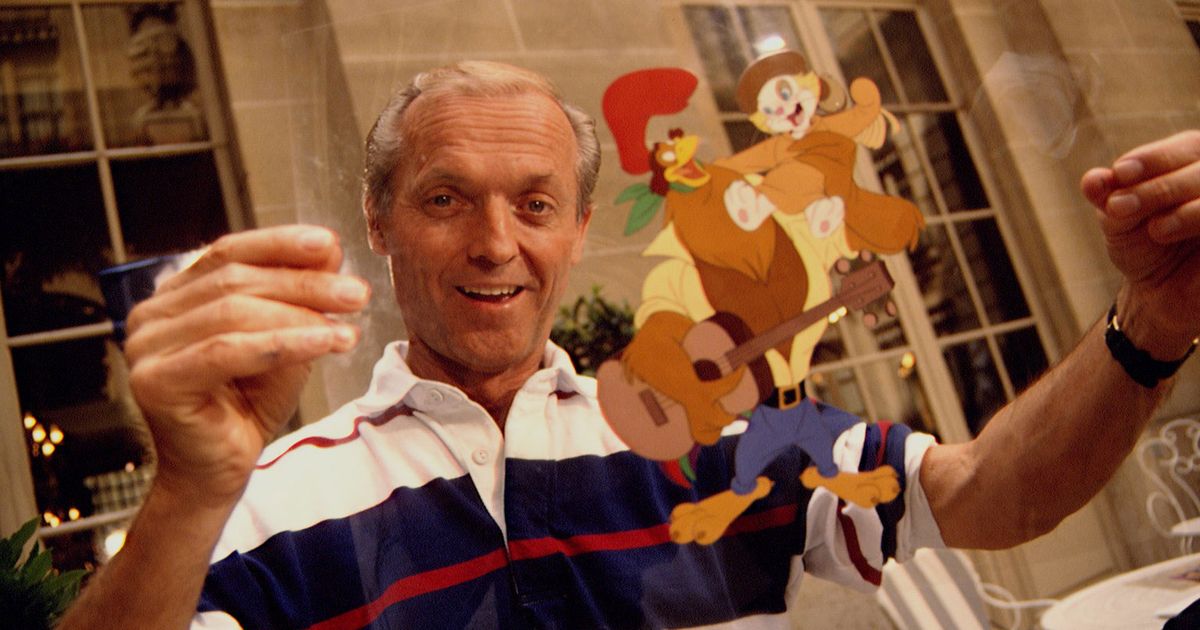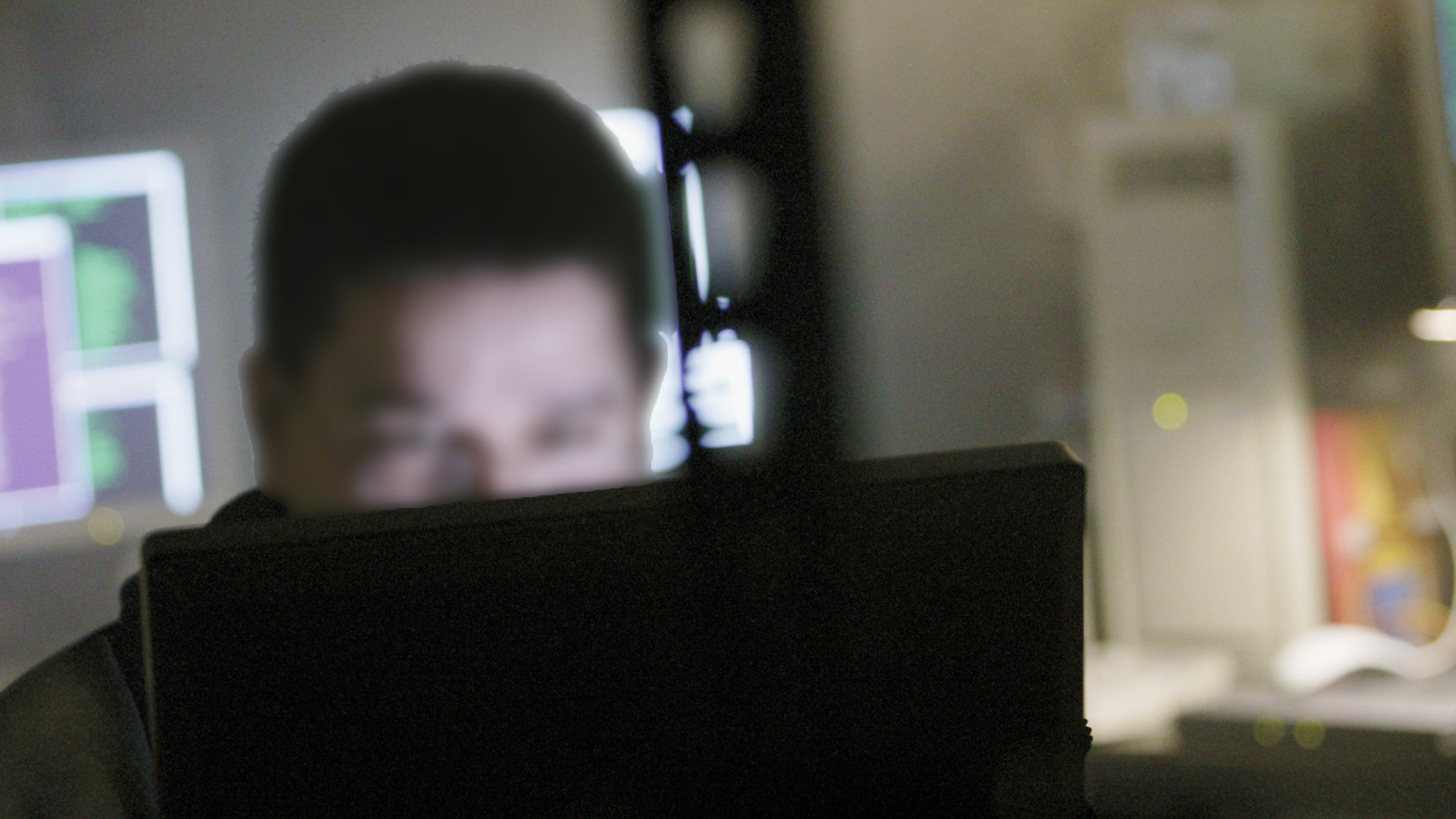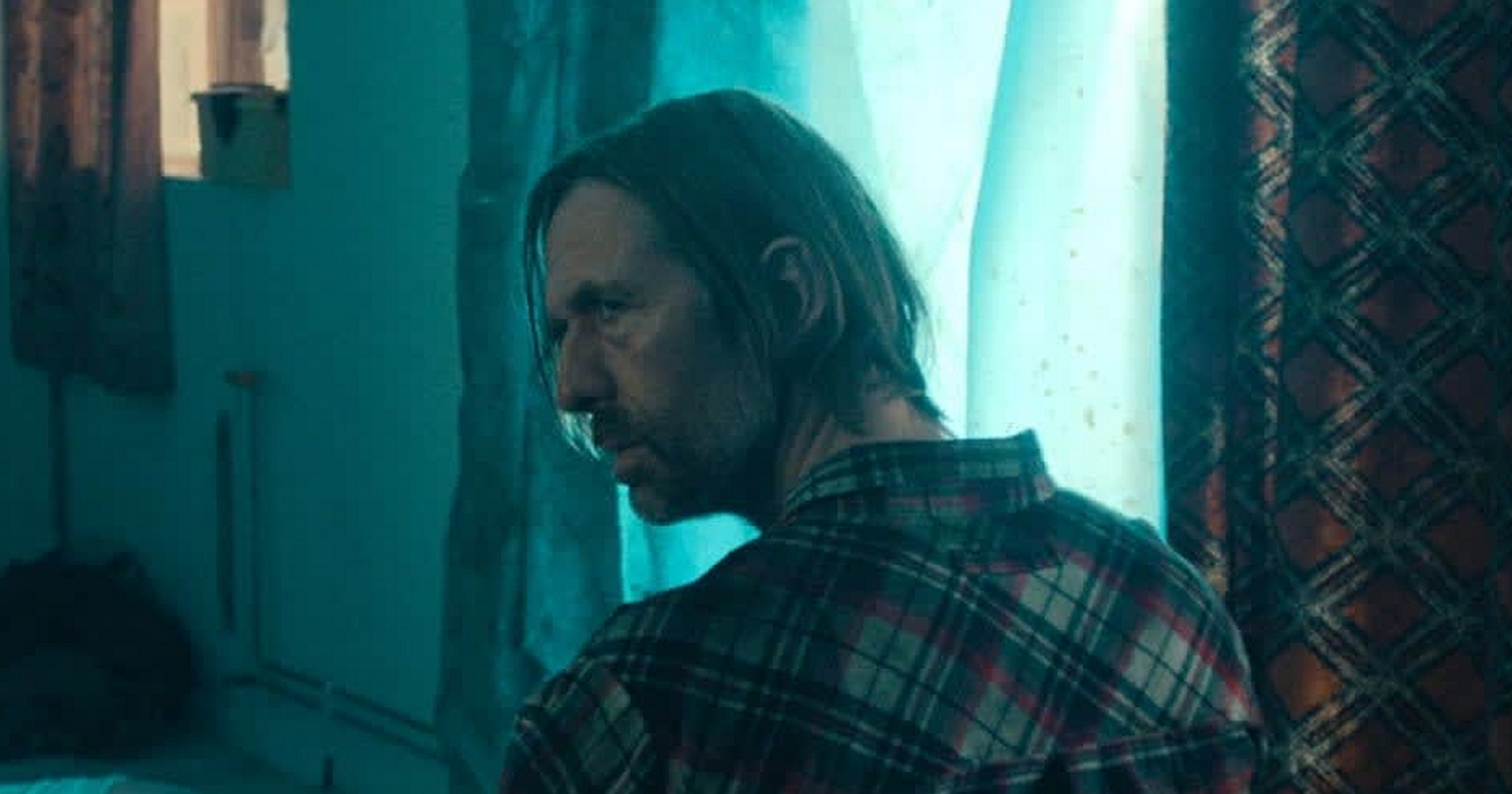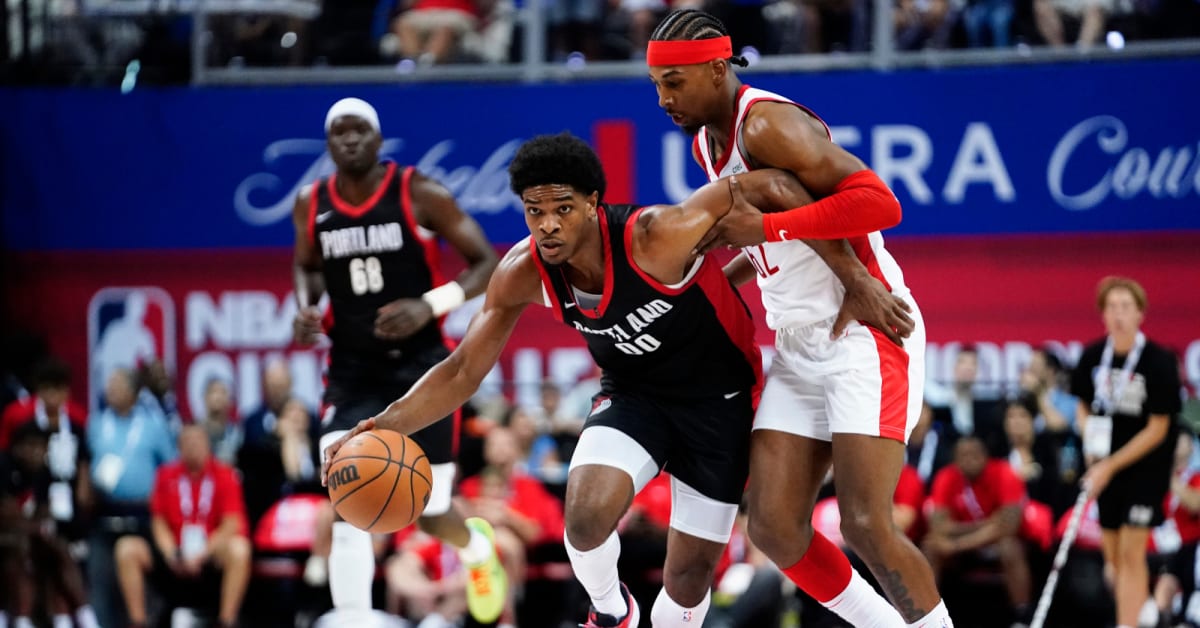
An American Tail Was My Own Test of Endurance
Don Bluth holding an animation cel from his film Rock-A-Doodle, 1992. Photo: Jacques Bourguet/Sygma/Sygma via Getty Images
Despite being a master of the cartoon craft, Don Bluth still feels like an underdog, even now, just shy of 40 years since the release of his first film, The Secret of NIMH. His new memoir Somewhere Out There: My Animated Life, out July 19, is full of lessons he learned across his long career, charting his work at and, later, dramatic resignation from Walt Disney Animation Studios to how he struck out on his own to direct acclaimed titles like An American Tail, The Land Before Time, All Dogs Go to Heaven, and Anastasia. Alongside granular notes on “The Art of the Storyboard” and tips on how to effectively deploy cliffhangers, Bluth narrates a staccato career arc defined by highs and lows.
The lows weren’t easy. Bluth describes how the money was tight and the anxieties rampant. The excerpt below discusses how he had to learn how to negotiate the chaos of Hollywood in order to collaborate with Steven Spielberg — whose blockbuster E.T. completely crushed NIMH at the box office in 1982. After NIMH flopped, Bluth kept working, fielded late-night calls from another would-be Spielberg collaborator, and fought his own uncertainty before his next big break finally broke through. Ultimately, the persistence paid off; An American Tail became the highest-grossing non-Disney animated film upon its release in 1986. And Fievel Mousekwitz was far from the last scrappy, unforgettable hero Bluth would bring to life. This is the story of how he finally found “the perfect story.”
Excerpt from 'Somewhere Out There'


An American Tail, 1986.Photo: Universal Pictures
III. The Perfect Story
At last, in 1984, the long-awaited call from Amblin electrified us. Steven had found the perfect story. Gary, John, and I met with him at Amblin, where he arrived fashionably late. He sat down and leaned back in his chair; we leaned forward eagerly, and he began his story. “It’s about a young mouse named Mousie Mousekewitz and his family, who emigrate from Russia to the United States by boat after their home is destroyed by cats. During the trip, a fierce storm throws little Mousie overboard and he loses contact with his family. The story will be his journey to find them again. It’ll be a musical, and we’ll call it An American Tail.” He paused. “Spelled T-A-I-L, not T-A-L-E.”
My first thought was, Another mouse movie? My second was, Hell-a-dee damn. That is a perfect story.
But hold on, you might be saying. Isn’t the mouse in the movie called Fievel? Yup. Steven surprised us one day in Amblin’s conference room when he changed the hero’s name from Mousie to Fievel. The reason is simple: It was the name of Steven’s grandfather from Russia. We kept the surname “Mousekewitz,” but just called the little guy “Fievel.”
Steven critiqued, we adjusted, he critiqued again, we adjusted again, he approved.
A young mouse lost in a strange land, yearning for his family and happiness — anyone would root for the little guy. Something felt off to me though. As Steven kept talking, I realized what it was. Steven was picturing the story in an animal world, and that hadn’t worked for Robin Hood or The Fox and the Hound. I raised my hand timidly, feeling like I was interrupting a master class in filmmaking. “What if … the story took place in the human world? With the little mice dwarfed by human-size ships and houses.”
Steven beamed and nodded his approval. “I’ve seen what you can do,” he assured us. “Go do what you feel is right, then show it to me. I’ll tell you what I think, and we’ll go from there.”
That was how Steven and I worked, especially once he began filming Empire of the Sun in Japan. We sent everything to him for approval, from storyboards to character designs to sequences. He’d mark up the storyboards with excellent points, like “If you do this, it would be funnier.
If you did that, it would be stronger.” Everyone has a gift. His is that he knows how to put cameras in the best place to tell the story. His notes helped me look at each panel that I drew as a way to tell the audience something important — whether it was the characters or the story.
For months, our army of animators steadily inched our way through the sequences. Steven critiqued, we adjusted, he critiqued again, we adjusted again, he approved. Before animating the humans, we shot them in live-action and used their movement to inspire the animators. As for the mice, they had free rein. I mean, who knows how a mouse wearing a shirt and pants and shoes actually walks? We leaned into the pathos of little Fievel’s journey — the terror of the storm, the loss he feels when he realizes he is alone, his anger when he says, “Well, if my family doesn’t care about me, then I don’t care about them.” We made sure to weave in funny jokes, and with Dom DeLuise onboard ad-libbing as Tiger the cat, that was easy.
I was always thinking about how to make this mouse story different from NIMH and The Rescuers. Along with Steven and the marketing department — which was gearing up for cute toys based on the Mousekewitz family — we went for the nostalgic look of Walt’s movies from the 1930s and ’40s, which had a rounded, cuddly feel. To properly show how a storm would toss a big ship, we built a model of the ship that brought the mouse family to America. The “Mouse of Minsk,” which terrorized the cats, was also based on a model.
There were obstacles; that happens on a journey to make a movie. My comedy hero, Sid Caesar, didn’t quite have the right touch I wanted for Henri, the pigeon who welcomes Fievel. Once Christopher Plummer took over the role, we had to rerecord Henri’s lines and even redesign to match the actor’s dignified demeanor. With dailies needing to be approved by Amblin and marketing and Steven in Japan, we began to fall behind schedule. By then, I was feeling so sure of our work that I sometimes made the decision to go ahead and animate without his approval, saying, “If Steven wants us to change it, we’ll just toss it out and start over.” Not the approach I would recommend, of course, but it worked out.
Meanwhile, in 1985, Disney released their much-ballyhooed animated feature The Black Cauldron. They poured millions of dollars into this movie — almost three times An American Tail’s budget, which ended up being $9 million. Our budget was tight, and we had to work fast to make the schedule. It was hard work. There was a lot at stake. Yet every morning the man in the mirror and I were in agreement: We couldn’t believe that a Utah farm boy was working with Steven Spielberg. What a magical experience.
Books you buy through our links may earn us a commission.
 Somewhere Out There: My Animated Life, by Don Bluth $20
Somewhere Out There: My Animated Life, by Don Bluth $20 $22 now 9% off$20 Photo: Smart Pop$20at Amazon Buy $22at Barnes & Noble Buy
Related
- How Don Bluth Animated The Land Before Time
- The 100 Most Influential Sequences in Animation History
Goldman and Pomeroy joined Bluth in putting in their notice at Disney in 1979, going on to form Don Bluth Productions and producing several animated films together.E.T. the Extra-Terrestrial, released more than a month ahead of NIMH, proved 1982’s theatrical juggernaut. Its record of 16 weeks as No. 1 at the box office remains unbeaten.Throughout the chapters of Somewhere Out There, Bluth regularly returns to this narrative convention, where he steps back from the action, imagining himself looking in the mirror and reflecting on the events that shaped his life.Eventually, this project became Hook, a film Spielberg talked Jackson out of. As Spielberg told EW in 2011: “I called Michael and I said, ‘This is about a lawyer that is brought back to save his kids and discovers that he was once, when he was younger, Peter Pan.’ So Michael understood at that point it wasn’t the same Peter Pan he wanted to make.”




























![Finally! General Hospital’s Brook Lynn and Chase Can Have Their Wedding Now That [Spoiler] Is Returning Finally! General Hospital’s Brook Lynn and Chase Can Have Their Wedding Now That [Spoiler] Is Returning](https://i0.wp.com/soaps.sheknows.com/wp-content/uploads/2022/11/163481_1083_v1.jpg?fit=300%2C300&ssl=1)








































